Q1: Which one of the following options represents possible voltage polarities in a single phase two winding transformer? Here, Vp is the applied primary voltage, Ep is the induced primary voltage, Vs is the open circuit secondary voltage, and Es is the induced secondary voltage. (2024)
(a)  (b)
(b)  (c)
(c)  (d)
(d)  Ans: (b)
Ans: (b)
Q2: When the winding c − d of the singlephase, 50 Hz, two winding transformer is supplied from an AC current source of frequency 50 Hz, the rated voltage of 200 V (rms), 50 Hz. is obtained at the open-circuited terminals a - b. The cross sectional area of the core 5000 mm2 and the average core length traversed by the mutual flux is 500 mm. The maximum allowable flux density in the core is Bmax = 1 Wb/m2 and the relative permeability of the core material is 5000. The leakage impedance of the winding a − b and winding c - d at 50 Hz are (5 + j100π × 0.16)Ω and (11.5 + j100π × 0.36)Ω, respectively. Considering the magnetizing characteristics to be linear and neglecting core loss, the self-inductance of the winding a − b in millihenry is ____ (Round off to 1 decimal place). (2023)
 (a) 1256.3
(a) 1256.3
(b) 4152.4
(c) 2218.4
(d) 6523.8
Ans: (c)
Sol: 
 Now, mutual inductance,
Now, mutual inductance,
 Therefore, self inductance of winding.
Therefore, self inductance of winding.

Q3: In a single-phase transformer, the total iron loss is 2500W at nominal voltage of 440V and frequency 50Hz. The total iron loss is 850W at 220V and 25Hz. Then, at nominal voltage and frequency, the hysteresis loss and eddy current loss respectively are (2021)
(a) 1600W and 900W
(b) 900W and 1600W
(c) 250W and 600W
(d) 600W and 250W
Ans: (b)
Sol:  ⇒ 2500 = Af + Bf2
⇒ 2500 = Af + Bf2 
or, (2500/f) = A + Bf
or, (2500/50) = A + B(50) ...(i)
and (850/25) = A + B(25) ....(ii)
Solving (i) and (ii), we get
 and from (i),
and from (i), 
So, at 50 Hz

Q4: A conducting square loop of side length 1 m is placed at a distance of 1 m from a long straight wire carrying a current l = 2 A as shown below. The mutual inductance, in nH (rounded off to 2 decimal places), between the conducting loop and the long wire is __________. (2020)
 (a) 138.63
(a) 138.63
(b) 122.44
(c) 156.82
(d) 186.12
Ans: (a)
Sol:  Magnetic flux crossing square loop is
Magnetic flux crossing square loop is


Q5: Windings 'A', 'B' and 'C' have 20 turns each and are wound on the same iron core as shown, along with winding 'X' which has 2 turns. The figure shows the sense (clockwise/ anti-clockwise) of each of the windings only and does not reflect the exact number of turns, If windings 'A', 'B' and 'C' are supplied with balanced 3-phase voltages at 50 Hz and there is no core saturation, the no-load RMS voltage (in V, rounded off to 2 decimal places) across winding 'X' is _________ . (2020)
 (a) 36
(a) 36
(b) 46
(c) 12
(d) 58
Ans: (b)
Sol: As per GATE official answer key MTA (Marks to ALL)

Q6: The figure below shows the per-phase Open Circuit Characteristics (measured in V) and Short Circuit Characteristics (measured in A) of a 14 kVA, 400 V, 50 Hz, 4-pole, 3-phase, delta connected alternator, driven at 1500 rpm. The field current, If is measured in A. Readings taken are marked as respective (x,y) coordinates in the figure. Ratio of the unsaturated and saturated synchronous impedances (Zs(unsat)/Zs(sat)) of the alternator is closest to (2020)
 (a) 2.1
(a) 2.1
(b) 2.025
(c) 2
(d) 1
Ans: (a)
Sol:  For unsaturated synchronous impedance
For unsaturated synchronous impedance

Q7: A single-phase, 4 kVA, 200 V/100 V, 50 Hz transformer with laminated CRGO steel core has rated no-load loss of 450 W. When the high-voltage winding is excited with 160 V, 40 Hz sinusoidal ac supply, the no-load losses are found to be 320 W. When the highvoltage winding of the same transformer is supplied from a 100 V, 25 Hz sinusoidal ac source, the no-load losses will be _________W (rounded off to 2 decimal places). (2020)
(a) 162.5
(b) 12.45
(c) 188.66
(d) 212.46
Ans: (a)
Sol: 
 From (i) and (ii),
From (i) and (ii),
 Equation (iii) - (iv),
Equation (iii) - (iv),
 Now at 100 V, 25 Hz,
Now at 100 V, 25 Hz,

Q8: A single-phase transformer of rating 25 kVA, supplies a 12 kW load at power factor of 0.6 lagging. The additional load at unity power factor in kW (round off to two decimal places) that may be added before this transformer exceeds its rated kVA is __________. (2019)
(a) 7.21
(b) 6.24
(c) 5.69
(d) 8.78
Ans: (a)
Sol: For a 12 kW, 0.6 pf lagging load,
 Trasformer rating , S = 25kVA
Trasformer rating , S = 25kVA
Let us assume load thet can be added is P kW then,

Q9: A 5 kVA, 50 V/100 V, single-phase transformer has a secondary terminal voltage of 95 V when loaded. The regulation of the transformer is (2019)
(a) 4.50%
(b) 9%
(c) 5%
(d) 1%
Ans: (c)
Sol:
Voltage regulation = 

Q10: A 3-phase 900kVA, 3kV/√3kV (Δ/Y), 50Hz transformer has primary (high voltage side) resistance per phase of 0.3 Ω and secondary (low voltage side) resistance per phase of 0.02 Ω. Iron loss of the transformer is 10 kW. The full load % efficiency of the transformer operated at unity power factor is _______ (up to 2 decimal places). (2018)
(a) 56.25
(b) 47.25
(c) 97.36
(d) 112.25
Ans: (c)
Sol: 900kVA, Δ/Y, 3−phase transformer
 Given,
Given,

 Primary line current,
Primary line current,
 Cu loss of H.V. side
Cu loss of H.V. side

Q11: A single-phase 100 kVA, 1000 V / 100 V, 50 Hz transformer has a voltage drop of 5% across its series impedance at full load. Of this, 3% is due to resistance. The percentage regulation of the transformer at full load with 0.8 lagging power factor is (2018)
(a) 4.8
(b) 6.8
(c) 8.8
(d) 10.8
Ans: (a)
Sol: Percent voltage regulation
 (where, '+' lag p.f. and '-' lead p.f.)
(where, '+' lag p.f. and '-' lead p.f.)
At full load:
 Voltage regulation at full load at 0.8 p.f. lagging
Voltage regulation at full load at 0.8 p.f. lagging
V.R. = 3(0.8) + 4(0.6) = 4.8%
Q12: If the primary line voltage rating is 3.3 kV (Y side) of a 25 kVA. Y-Δ transformer (the per phase turns ratio is 5 : 1), then the line current rating of the secondary side (in Ampere) is_____. (SET-2 (2017))
(a) 38
(b) 44
(c) 22
(d) 82
Ans: (a)
Sol:  From turn ratio,
From turn ratio,
Q13: A three-phase, three winding Δ/Δ/Y (1.1kV/6.6kV/400 V) transformer is energized from AC mains at the 1.1 kV side. It supplies 900 kVA load at 0.8 power factor lag from the 6.6 kV winding and 300 kVA load at 0.6 power factor lag from the 400 V winding. The RMS line current in ampere drawn by the 1.1 kV winding from the mains is _______. (SET-1 (2017))
(a) 456
(b) 286
(c) 625
(d) 789
Ans: (c)
Sol: Load on 6.6 kV winding = 900 kVA @0.8 pf lag
 Transforamtion Ratio
Transforamtion Ratio
 Load on 400 V winding = 300 kVA at 0.6 p.f.
Load on 400 V winding = 300 kVA at 0.6 p.f.
 So, line value of current
So, line value of current
 Current drawn by 1.1 kV winding will be
Current drawn by 1.1 kV winding will be

Q14: Three single-phase transformers are connected to form a delta-star three-phase transformer of 110 kV/ 11 kV. The transformer supplies at 11 kV a load of 8 MW at 0.8 p.f. lagging to a nearby plant. Neglect the transformer losses. The ratio of phase currents in delta side to star side is (SET-2 (2016))
(a) 1 : 10√3
(b) 10√3 : 1
(c) 1:10
(d) √3 : 10
Ans: (a)
Sol: At, 100 kV, load is 8 MW, 0.8 p.f. lagging

Q15: A single-phase, 2 kVA, 100/200 V transformer is reconnected as an auto-transformer such that its kVA rating is maximum. The new rating, in kVA, is ______. (SET-2 (2016))
(a) 4
(b) 5
(c) 6
(d) 7
Ans: (c)
Sol: 2 kVA, 100/200 V transformer,

 = (2 + 1) x 2 = 6
= (2 + 1) x 2 = 6
Q16: A single-phase, 22 kVA, 2200 V/ 220 V, 50 Hz, distribution transformer is to be connected as an auto-transformer to get an output voltage of 2420 V. Its maximum kVA rating as an autotransformer is (SET-1 (2016))
(a) 22
(b) 24.2
(c) 242
(d) 2420
Ans: (c)
Sol: 22 KVA, 2200 V/220 V, 50Hz
Distribution transformer is to be connected as on auto transformer to get an output voltage of 2420V.
(k V A)maximum as an auto transformer=?
as voltage rating is 2420 i.e. (2200 + 220)V additive polarity,

Q17: A single-phase 400 V, 50 Hz transformer has an iron loss of 5000 W at the rated condition. When operated at 200 V, 25 Hz, the iron loss is 2000 W. When operated at 416 V, 52 Hz, the value of the hysteresis loss divided by the eddy current loss is ______. (SET-1 (2016))
(a) 1.44
(b) 2.25
(c) 1.36
(d) 2.58
Ans: (a)
Sol: 400V, 50Hz transformer, Pi = 5000Watt
When,
200V, 25Hz,
 as in the problem
as in the problem
 From given data,
From given data,
 Solving equation (i) and (ii),
Solving equation (i) and (ii),

Q18: If an ideal transformer has an inductive load element at port 2 as shown in the figure below, the equivalent inductance at port 1 is (SET-1 (2016))
 (a) nL
(a) nL
(b) n2L
(c) n/L
(d) n2/L
Ans: (b)
Sol:  At port 1 i.e. high voltage side impedance will be high and current will be low. So, n2L.
At port 1 i.e. high voltage side impedance will be high and current will be low. So, n2L.
Q19: Two three-phase transformers are realized using single-phase transformers as shown in the figure.
 The phase difference (in degree) between voltages V1 and V2 is _______. (SET-2 (2015))
The phase difference (in degree) between voltages V1 and V2 is _______. (SET-2 (2015))
(a) 10
(b) 20
(c) 30
(d) 40
Ans: (c)
Q20: A three-winding transformer is connected to an AC voltage source as shown in the figure. The number of turns are as follows: N1 = 100, N2 = 50, N3 = 50. If the magnetizing current is neglected, and the currents in two windings are  2∠30° A and
2∠30° A and  then what is the value of the current
then what is the value of the current  in Ampere? (SET-2 (2015))
in Ampere? (SET-2 (2015))
(a) 1∠90°
(b) 1∠270°
(c) 4∠90°
(d) 4∠270°
Ans: (a)
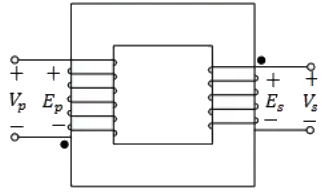 (b)
(b) 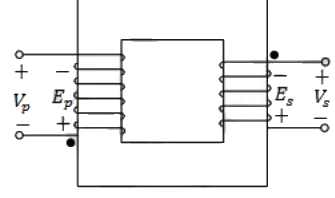 (c)
(c) 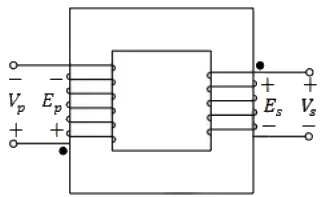 (d)
(d) 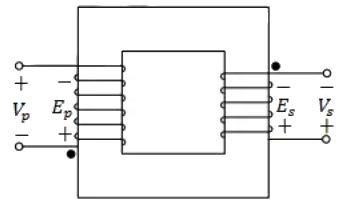 Ans: (b)
Ans: (b)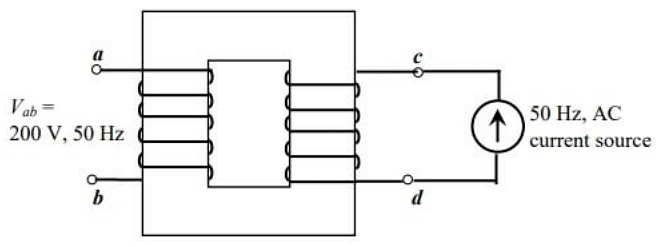 (a) 1256.3
(a) 1256.3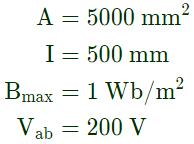
 Now, mutual inductance,
Now, mutual inductance, Therefore, self inductance of winding.
Therefore, self inductance of winding.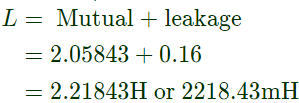
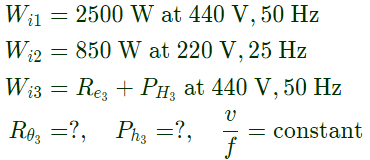 ⇒ 2500 = Af + Bf2
⇒ 2500 = Af + Bf2 
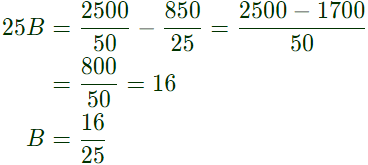 and from (i),
and from (i), 

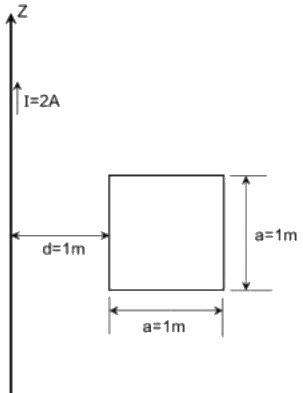 (a) 138.63
(a) 138.63 Magnetic flux crossing square loop is
Magnetic flux crossing square loop is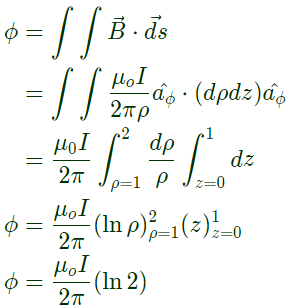
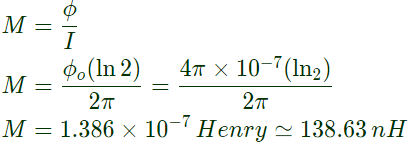
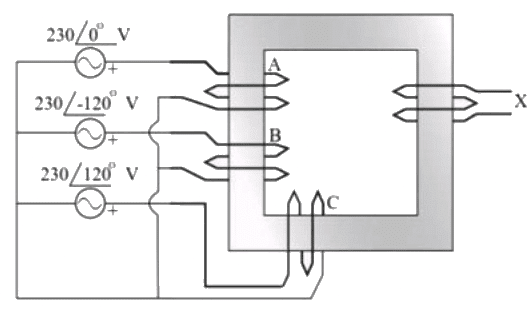 (a) 36
(a) 36
 (a) 2.1
(a) 2.1 For unsaturated synchronous impedance
For unsaturated synchronous impedance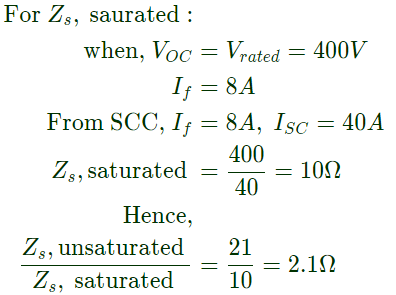

 From (i) and (ii),
From (i) and (ii),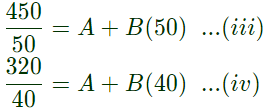 Equation (iii) - (iv),
Equation (iii) - (iv),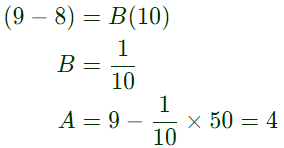 Now at 100 V, 25 Hz,
Now at 100 V, 25 Hz,
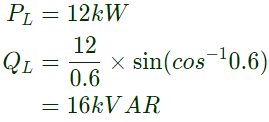 Trasformer rating , S = 25kVA
Trasformer rating , S = 25kVA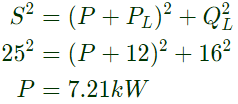


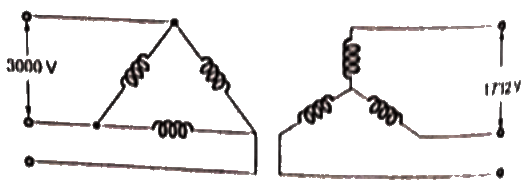 Given,
Given,
 Primary line current,
Primary line current,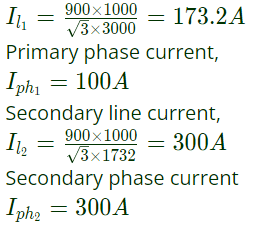 Cu loss of H.V. side
Cu loss of H.V. side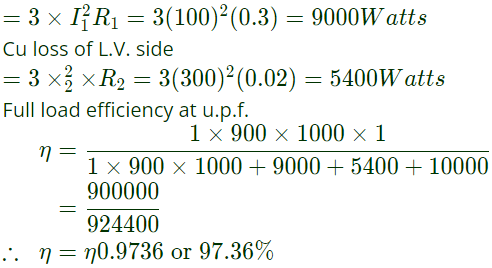
 (where, '+' lag p.f. and '-' lead p.f.)
(where, '+' lag p.f. and '-' lead p.f.) Voltage regulation at full load at 0.8 p.f. lagging
Voltage regulation at full load at 0.8 p.f. lagging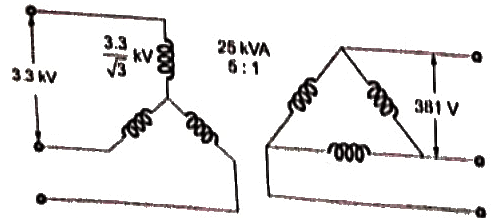 From turn ratio,
From turn ratio,
 Transforamtion Ratio
Transforamtion Ratio Load on 400 V winding = 300 kVA at 0.6 p.f.
Load on 400 V winding = 300 kVA at 0.6 p.f.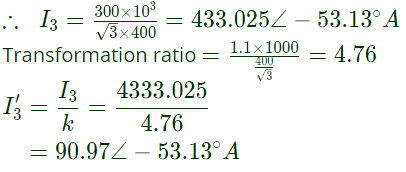 So, line value of current
So, line value of current Current drawn by 1.1 kV winding will be
Current drawn by 1.1 kV winding will be
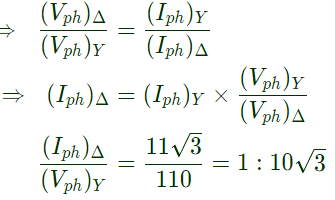

 = (2 + 1) x 2 = 6
= (2 + 1) x 2 = 6
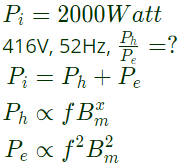 as in the problem
as in the problem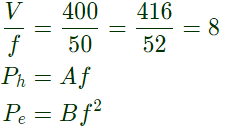 From given data,
From given data,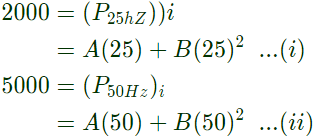 Solving equation (i) and (ii),
Solving equation (i) and (ii),
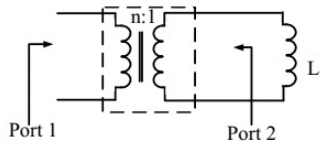 (a) nL
(a) nL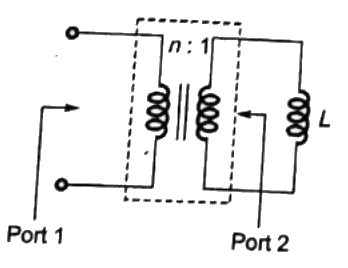 At port 1 i.e. high voltage side impedance will be high and current will be low. So, n2L.
At port 1 i.e. high voltage side impedance will be high and current will be low. So, n2L.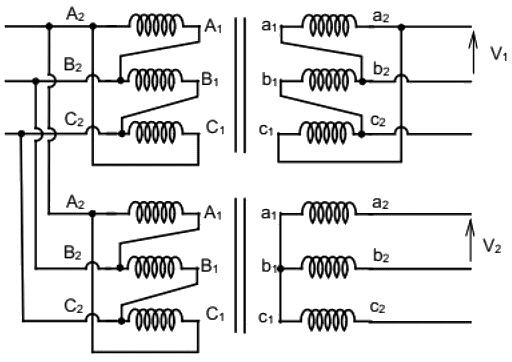 The phase difference (in degree) between voltages V1 and V2 is _______. (SET-2 (2015))
The phase difference (in degree) between voltages V1 and V2 is _______. (SET-2 (2015)) 2∠30° A and
2∠30° A and  then what is the value of the current
then what is the value of the current  in Ampere? (SET-2 (2015))
in Ampere? (SET-2 (2015))


























